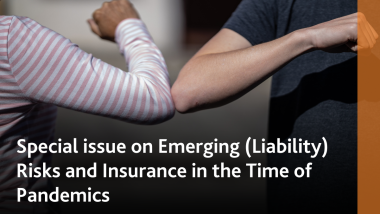Key insights from the October 2017 special issue on extreme events and climate risks of The Geneva Papers on Risk and Insurance—Issues and Practice
Below is a short overview of the six contributions on extreme events and climate risk published in this special issue. This special volume is a collaboration between The World Bank and The Geneva Association and aims to foster better knowledge and innovative ideas on the development of effective, affordable and sustainable disaster risk financing strategies.
Evaluating Sovereign Disaster Risk Finance Strategies: A Framework
This paper proposes a framework to evaluate and compare sovereign disaster risk finance instruments available to governments for funding disaster response. The framework helps to choose between different financial instruments, or between different combinations of instruments, to achieve appropriate and financially efficient strategies to fund disaster losses. It shows how a mix of instruments can minimise the overall cost of financing, given the risk profile of the country and its macroeconomic framework.Economic Assessment of Mitigating Damage of Flood Events: Cost-Benefit Analysis of Flood Proofing Commercial Buildings in Umbria, Italy
This paper examines integrated risk management for floods, which are among the costliest natural perils. It analyses the economic desirability of flood-proofing different types of commercial buildings in a specific flood-prone region of Europe. Its cost-benefit analysis shows that, on average, dry flood-proofing is economically attractive for certain categories of commercial buildings.Insurance as a Double-Edged Sword: Quantitative Evidence from the 2011 Christchurch Earthquake
This paper examines the role of business interruption insurance in business recovery following the Christchurch earthquake in 2011. It finds that insured firms are more likely to survive after a disaster in the medium term (2-3 years) and they even experience increased productivity and improved performance following a Cat. The analysis indicates not only the importance of adequate insurance coverage but also the importance of rapid claims settlement.An Urban Crisis Management System for Critical Infrastructures: Participation Possibilities for Insurance Companies
This paper presents an urban crisis-management system for better monitoring and management of critical infrastructures. It examines if and how insurance companies can contribute as actors in such innovative systems to holistically protect critical infrastructures by conducting an expert survey in the insurance industry. While the paper discovers occasional interest regarding the insurer's predefined roles as a data/knowledge provider, investor or data user, it highlights that each participation possibility poses challenges for insurance companies.The Development of Vulnerability Functions Relating Household Poverty Outcomes to Crop Failures in Ethiopia with the Prospect of Developing a Probabilistic Catastrophe Risk Model
This paper analyses the potential to combine Cat risk modelling with economic analysis of vulnerability to poverty using the example of drought hazard impacts on the welfare of rural households in Ethiopia. It outlines the Cat risk modelling framework and the role of the vulnerability module and presents results of a regression model estimating ex post drought impacts on consumption for heterogeneous household types. The paper concludes with caution that a full Cat risk model could be applied.- Integrating Social Protection Strategies for Improved Impact: A Comparative Evaluation of Cash Transfers and Index Insurance in Kenya
This paper conducts a comparative study of social protection programmes in Kenya that aim to use public funds to reduce poverty and vulnerability. Cash transfers have proven to be an effective social protection strategy in many contexts but they are extremely expensive. The study uses household-level panel data to estimate the marginal impacts of observed cash and index insurance transfers (subsidies) on household income in northern Kenya. The findings are that the integrated programme reduces poverty to a greater degree than cash transfers alone, highlighting the importance of protecting the vulnerable in addition to supporting the poorest.








